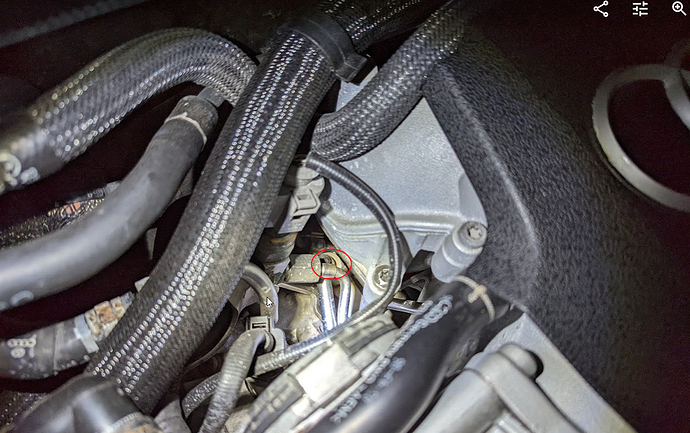Ran into a very similar issue this week, with a very strong fuel smell in the cabin. I thought it was the last injector on the right side leaking, so being in a hurry for a formal event I pulled the IM and resealed that 1 injector. Still leaking, actually worse.
Thought it might have been the same line mentioned in this thread, couldn’t get on it with a regular or offset open end 17mm and I don’t have a crow’s foot (but I’m getting one just for this).
Found a good way to look for the leaks though. I used a borescope (a cheap Amazon one with front and side cams) and I put it right down near this fitting and pointed the side cam forward which gave me a good view looking down the fuel rail.
Turns out the rail itself is cracked. Previous shop didn’t install the last bolt that supports the bracket in the back and so vibration caused a crack right at the end of the rail where it meets the line.

